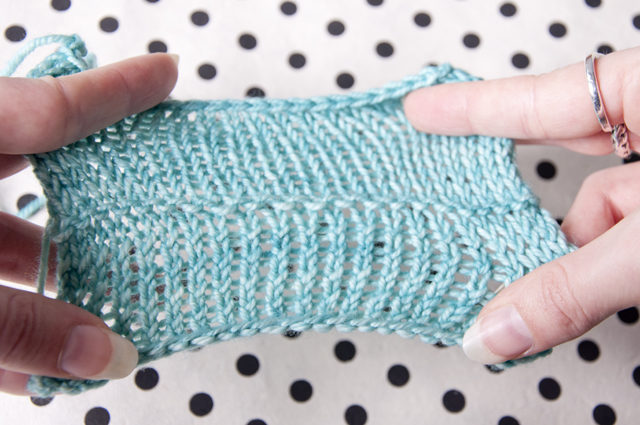There are two questions about twisted stitches that come up a lot from knitters who are working on Miette. What are they and why use them? Twisted stitches are exactly what they sound like. They’re stitches that have been twisted by being worked through the back loop so the legs cross instead of being open. You’ll most often run across twisted stitches in textured stitch patterns or ribbing patterns.

Ribbing can cause the legs of a normal stitch to spread farther apart than in stockinette, and many knitters don’t enjoy the appearance of that. On the left is normal, plain ribbing that was created using plain knits and purls. On the right is twisted ribbing. Twisted stitches twist the legs of a stitch which pulls the column of stitches in tight and prevents it from expanding like normal ribbing. Ribbing with twisted stitches tends to look neater than normal ribbing, but it also doesn’t stretch as much. This can be useful for a yarn that can stretch out of shape, like the cotton blends recommended for Miette.

And I can’t write about twisted stitches without writing about accidental twisted stitches. They’re a common mistake for beginner and self-taught knitters, typically caused by wrapping yarn in the wrong direction while purling. Unintentionally twisted stitches can create a striped look and will spoil features like eyelets. If you’ve ever noticed that your eyelets aren’t as large or your stockinette isn’t as smooth as the sample, this could be the culprit.

The easiest way to spot accidental twisted stitches is to stretch your knitting. Regular stockinette stretches evenly with the columns opening up, but twisted stitches prevent the columns from opening, so you get tight, compact columns instead.
Leave a Reply